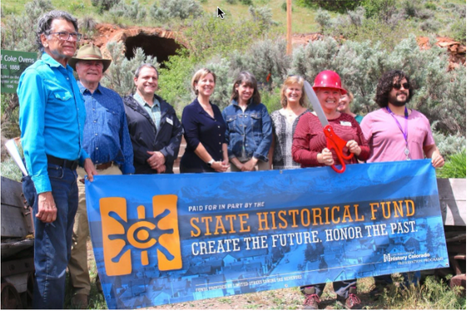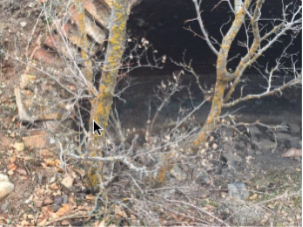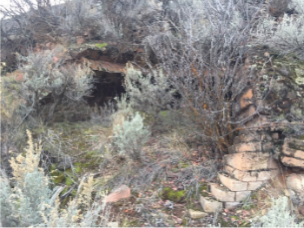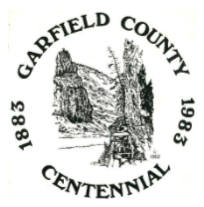Cardiff & the Coke Ovens
The Cardiff Coke Ovens
Phase One of our Colorado State Historical Fund Grant
Phase I of the Cardiff Coke Ovens Stabilization Project was awarded $34,930 on Nov 1, 2022 from History Colorado's State Historic Fund for Planning and Preservation, Stabilization Documents, Vegetation Removal, Erosion Control and Interpretive Signage. Thank you History Colorado!
Based on the plans created during Phase I, Phase II will include: vegetation removal from fronts and tops of remaining ovens, erosion mitigation and reseeding for the remaining site; preservation of high-priority ovens by Summit Sealants and Restoration Services Inc.; research, design, manufacture and install interpretive signage specifically about this preservation project and for the large historic artifacts currently stored on the site; and archeological monitoring as needed. All work in Phase II will meet the Secretary of the Interior’s Standards and Guidelines for Archeology and Historic Preservation. The GSHS intends to approach the History Colorado – State Historical fund for another round of competitive grant funding to complete Phase II of this important preservation project.
The GSHS will continue to host periodic volunteer cleanup days to maintain the site and mitigate major vegetation growth. Preliminary plans for income generation are being considered such as installing a freestanding coffee vendor "food truck" at the Ovens site. As part of its fundraising efforts for this two-phased project, the Historical Society will establish a Cardiff Coke Ovens Maintenance Fund to ensure that the funds are in place to maintain and steward this resource. The Historical Society is now applying for Phase 2 funding.
The City of Glenwood Springs has begun the construction of the new bypass around the main corridor of the City which will run directly alongside the property and connect to Highway 82. The reroute and the ensuing construction activity will occur within feet of the Cardiff Coke Oven site property line and not far from the ovens themselves.
Thanks to a $140,000 grant from the Garfield County Federal Mineral Lease District (FMLD) awarded to the City of Glenwood Springs in 2022, the City will be constructing parking spaces; paving an ADA accessible path in front of the primary ovens with stairs and a ramp; installing site lighting, water, electric and a fire hydrant; and regrading and reseeding the City’s Right-of-Way
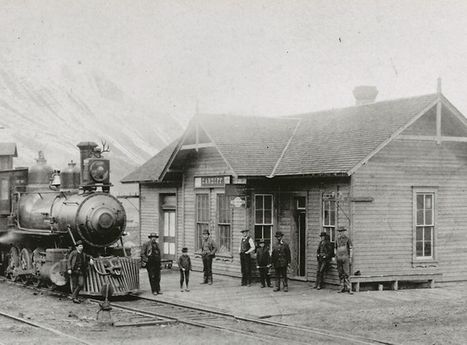
Colorado Midland Railroad depot. (Photo from Dan Abbot collection used with permission.)
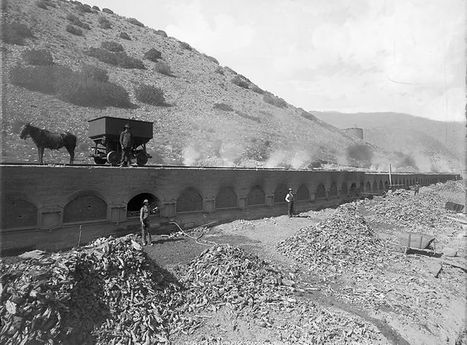
Looking north toward Glenwood Springs where the Colorado Midland Railroad cars loaded coal onto horse-drawn carts across tracks located on top of the ovens. Coal then dropped into the ovens through an opening where it was ignited. The doors in front controlled access to the finished product—coke, a fuel that burned hotter and cleaner than coal and is shown in piles awaiting shipment on the Colorado Midland RR tracks which are to the right and out of picture (photo by William Henry Jackson, courtesy History Colorado-Denver, Colorado; negative 86.200.7052)
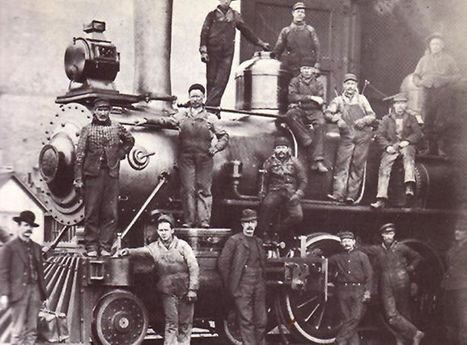
Cardiff engine house crew with Colorado Midland engine. (Photo courtesy of William Reich.)

View of Cardiff to the northeast toward Glenwood Springs (courtesy History Colorado-Denver, Colorado; photograph number 87.41.46).
Why Cardiff?
In September of 1887, the Grand River Coal and Coke Company selected Cardiff, four miles south of Glenwood Springs, for their coal coking ovens. The coal for the ovens came from mines to the south at Marion, Spring Gulch, Jerome Park and Sunlight—places now all but erased from the face of the earth. By December, the town site was established, and the Colorado Midland Railroad was built to Cardiff. That same year the first 50 brick coke ovens were constructed. In January of 1888, the first coal was delivered, and the ovens fired.
What do silver and coal have in common?
In the 1880’s, silver ore mined near Aspen could not be smelted without high-quality bituminous coal which is “coked,” or heated to extremely high temperatures in beehive shaped ovens to remove impurities. Steel making also requires coked coal.
Cardiff, named after Cardiff, Wales grew into a thriving community of 402 people with miners from as far away as Italy and Wales. It had employee houses, two bunkhouses, a school, hotel, several mercantile establishments, a four-stall engine house, a section house, blacksmith shop, cattle pens and a wye. Imagine the incandescent glow of the ovens at night with smoke continually shrouding the community.
Colorado Fuel and Iron Company (C.F. & I.) dominated the region’s coal mining industry and took over the ovens in 1892, producing 65,000 tons per year by 1895. Coke production remained strong into 1900 but demand fell steadily until 1915 when the ovens were closed for good. The closure caused the decline of the town, little of which is left today.
In 1934, the town site and ovens were purchased by George Sumers, a New York investment banker. George built his summer home, a large log lodge, near Cardiff, using stone from the coke ovens for the lodge’s foundation and fireplace. The entrance to Glenwood Park’s homes to the north of Cardiff was also built from the oven’s stone facing as seen in the photo below.
The march of progress has destroyed most of the 249 ovens. Thanks to donors Kenneth Balcomb, Robert Delaney and Pete Waller the Glenwood Springs Historical Society owns the remaining 50 ovens which are on the National Register of Historic Places.
Phase One of our Colorado State Historical Fund Grant
The Cardiff Coke Ovens Stabilization Project was awarded $34,930 on Nov 1, 2022 for
- Planning and Preservation
- Stabilization Documents
- Vegetation Removal
- Erosion Control
- Interpretive Signage
· Remove vegetation from the fronts and the tops of the priority coke ovens. Thin and remove vegetation along the wharf edge and Midland Railroad grade to increase visibility. Install erosion mat and reseed cleared areas with native grasses and wildflowers to support drainage. Overgrowth of vegetation such as sage and sumac as well as soil erosion have resulted in structural damage to the ovens. Trees are emerging within the ovens themselves and other vegetation is disrupting the soils surrounding the ovens. This overgrowth contributes to the reduced visibility of the ovens from the road and to the increased opportunity for both poaching and vandalism. Any artifacts discovered on the ground during this process will be documented by an archeological monitor.
· Install fencing behind the ovens, and caution signage around the site for safety purposes and to reduce the threat of vandalism to the coke ovens. Fencing and signs above the ovens will keep humans and wildlife from walking on the vulnerable tops of the ovens, thereby reducing the safety hazard and preventing further deterioration
· Create site development and wildfire mitigation plans for the site with associated drawings to determine preservation work for Phase I & II. Given the severity of drought in the west and the more frequent occurrence of wildfire in Garfield County, thinning and other tools to create defensible space on this site need to occur to protect this resource.
· Research, design, manufacture and install interpretive signage to share the history and preservation of the site. To share the history of the Cardiff Coke ovens and educate visitors about the preservation project taking place at the site, interpretive signage will be designed, manufactured and installed
· Remove graffiti caused by vandalism from coke ovens. To discourage further vandalism and prepare for the masonry work in Phase II, the graffiti on the interior of the ovens will be removed using the gentlest means possible, per the Secretary of the Interior’s Standards and Guidelines for Archaeology and Historic Preservation.
The Cardiff Coke Ovens are historically significant because of their association with the industrial history of the lower Roaring Fork valley, including railroad, coal mining and immigrant history, and the information they yield concerning the construction and operation of coke ovens. The unusual venting system in three of the ovens provides clues to the functioning of a subsurface coal ignition system.
The City of Glenwood Springs has begun the construction of the new bypass around the main corridor of the City which will run directly alongside the property and connect to Highway 82. The reroute and the ensuing construction activity will occur within feet of the Cardiff Coke Oven site property line and not far from the ovens themselves.
Thanks to a $140,000 grant from the Garfield County Federal Mineral Lease District (FMLD) awarded to the City of Glenwood Springs in 2022, the City will be constructing parking spaces; paving an ADA accessible path in front of the primary ovens with stairs and a ramp; installing site lighting, water, electric and a fire hydrant; and regrading and reseeding the City’s Right-of-Way
Phase Two of our Colorado State Historical Fund Grant
Cardiff Coke Ovens (5GF461) and the Colorado Midland Railroad grade (5GF469)
Application due in early October and Grant Recipients announced Dec 15, 2023
Planning and Preservation
Masonry Stabilization
Vegetation Removal and Erosion Control
Interpretive Signage
Security
Long-Term Maintenance Planning
Rebuild brick entries to an arched opening at the three primary ovens 5,6 and 7; stabilize ovens by installing concrete compression rings at the roof openings, called trunnels
Remove vegetation and treat roots around ovens 13-52
Install erosion mat and reseed areas with native grasses around ovens 13-52 to prevent erosion, except at historic Midland Spur railroad grade.
Install two infra-red motion sensor security cameras and monitor site.
Research, design, manufacture and install interpretive signage about the history of the site, the coke oven preservation project, and the equipment artifacts on the site.
Create a 10-year coke ovens and site maintenance plan.
Design and plan for installation of opening barriers to deter access to primary ovens and protect other ovens from further damage caused by weathering
All work in Phase II will meet the Secretary of the Interior’s Standards and Guidelines for Archeology and Historic Preservation. The GSHS is approaching the History Colorado – State Historical fund for another round of competitive grant funding to complete Phases 2 and 3 of this important preservation project.
The GSHS will continue to host periodic volunteer cleanup days to maintain the site and mitigate major vegetation growth. Preliminary plans for income generation are being considered such as installing a freestanding food truck at the Ovens site. As part of its fundraising efforts for this phased project, the Historical Society will establish a Cardiff Coke Ovens Maintenance Fund to ensure that the funds are in place to maintain and steward this resource. Additional grants will be applied for as needed.
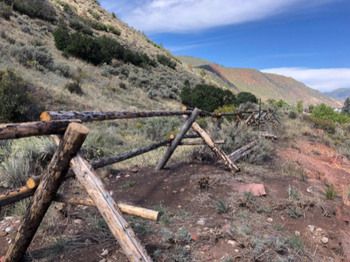
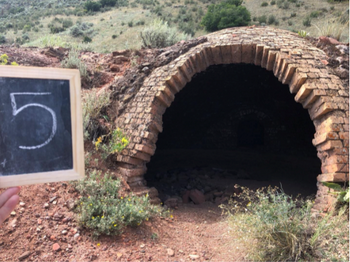
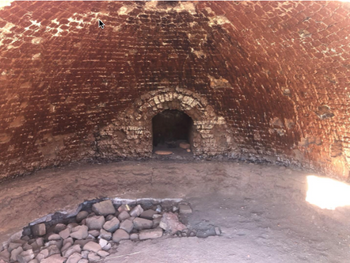
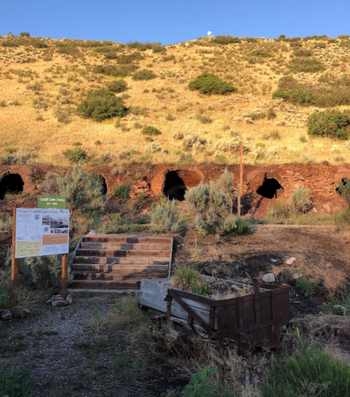
The City of Glenwood Springs has begun the construction of the new bypass around the main corridor of the City which will run directly alongside the property and connect to Highway 82. The reroute and the ensuing construction activity will occur within feet of the Cardiff Coke Oven site property line and not far from the ovens themselves.
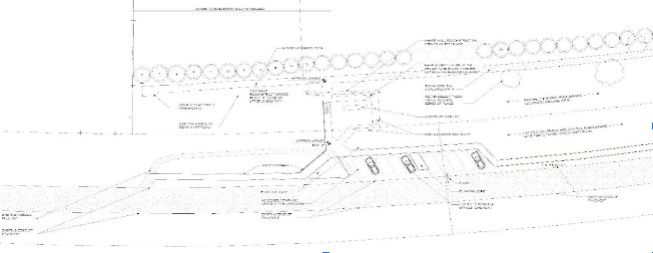
Thanks to a $140,000 grant from the Garfield County Federal Mineral Lease District (FMLD) awarded to the City of Glenwood Springs in 2022, the City will be constructing parking spaces; paving an ADA accessible path in front of the primary ovens with stairs and a ramp; installing site lighting, water, electric and a fire hydrant; and regrading and reseeding the City’s Right-of-Way
Want a Tour?
Interested in bringing a group by for a tour of the museum? Let's set up a date!

